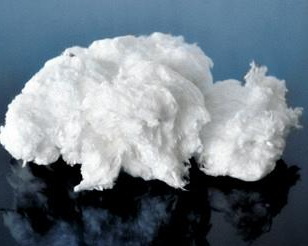STUDY OF HEAT EFFECTS IN TOPOCHEMICAL PROCESSES OF CELLULOSE ESTERIFICATION
UDC 547.458.82:536.6
Аннотация
In this research, the heat effects of topochemical esterification of cellulose, namely, nitration and acetylation, were studied. Depending on the conditions, the esterification process can occur in two main topochemical directions such as bulk and local. In bulk process the reagent quickly penetrates in amorphous domains (ADs), and more slowly in crystallites (CRs) of cellulose. In local esterification, the reagent penetrates the most accessible ADs only, whereas CRs remain almost unreacted. It was found that the reaction of bulk nitration of cellulose up to a substitution degree (DS) of 1.5 is endothermic and determined primarily by the contribution of the temperature-entropy component to the negative Gibbs potential. However, if DS > 1.5, the bulk nitration becomes exothermic, and therefore, the feasibility of this process is determined by the impact of enthalpy on the negative Gibbs potential. Unlike nitration, the bulk acetylation of cellulose is always an exothermic process, regardless of the achieved degree of substitution, and this process can be implemented due to the predominant contribution of reaction enthalpy to negative Gibbs potential. In the case of local esterification of ADs, the main contribution to the negative Gibbs potential is made by the reaction enthalpy that determines the reaction feasibility. Besides, the local acetylation is more exothermic than the local nitration process.
Скачивания
Metrics
Литература
Mattar H., Baz Z., Saleh A. et al. Water, Energy, Food and Env. J., 2020, vol. 1, pp. 1–15. https://doi.org/10.18576/wefej/010301.
Cheung C. Studies of the Nitration of Cellulose – Application in New Membrane Material. Diss. Thesis. Vancouver, 2014, 90 p.
Wei D.W., Wei H., Gauthier A.C. et al. J. Biores. Bioprod., 2020, vol. 5, pp. 1–15. https://doi.org/10.1016/j.jobab.2020.03.001.
Edgar K.J., Buchanan C.M., Debenham J.S. et al. Progress in Polym. Sci., 2001, vol. 26, pp. 1605–1688. https://doi.org/10.1016/S0079-6700(01)00027-2.
Filho G.R., Monteiro D.S., Da Silva M.K. et al. Carbohydrate Polym., 2008, vol. 73, pp. 74–82. https://doi.org/10.1016/j.carbpol.2007.11.010.
Fischer S., Thümmler K., Volkert B. et al. Macromolec. Sympos., 2008, vol. 262, pp. 89–96. https://doi.org/10.1002/MASY.200850210.
Sassy J-F., Chanzy H. Cellulose, 1995, vol. 2, pp. 111–127. https://doi.org/10.1007/BF00816384.
Ioelovich M. Polymers, 2021, vol. 13, pp. 1–11. https://doi.org/10.3390/polym13081241.
Gert E.V., Morales A.S., Zubets O.V. et al. Cellulose, 2000, vol. 7, pp. 57–66. https://doi.org/10.1023/A:1009206113613.
Costa M.N., Veigas B., Jacob J.M. et al. Nanotechnology, 2014, vol. 25, pp. 1–12. https://doi.org/10.1088/0957-4484/25/9/094006.
Trache D., Khimeche K., Mezroua A., Benziane M. J. Therm. Anal. Calorim., 2016, vol. 124, pp. 1485–1496. https://doi.org/10.1007/s10973-016-5293-1.
Panchenko O.A., Titova O.I. Khimiya rastitel'nogo syr'ya, 2005, vol. 3, pp. 85–88. (in Russ.).
Obolenskaya A.V., Yel'nitskaya Z.P., Leonovich A.A. Laboratornyye raboty po khimii drevesiny i tsellyulozy: ucheb. posobiye dlya vuzov. [Laboratory work on the chemistry of wood and cellulose: a textbook for universities]. Moscow, 1991, 320 p. (in Russ.).
Ioelovich M. World J. Adv. Res. Rev., 2023, vol. 19, pp. 225–232. https://doi.org/10.30574/wjarr.2023.19.2.1548.
Ioelovich M. Appl. Sci., 2023, vol. 13, pp. 1–11. https://doi.org/10.3390/app13042387.
Ioelovich M. World J. Adv. Res. Rev., 2023, vol. 18, pp. 1477–1488. https://doi.org/10.30574/wjarr.2023.18.3.1260.
Jessup R.S., Prosen E. Nat. Bur. Stand., 1950, vol. 44, pp. 387–393.
Uryash V.F., Larina V.N., Kokurina N.Y., Novoselova N.V. J. Phys. Chem., 2010, vol. 84, pp. 1023–1029. https://doi.org/10.1134/S0036024410060051.
Ioelovich M., Chemeris M., Chemeris N. Wood Chem., 1988, vol. 4, pp. 15–18.
Larina V.N., Uryash V.F., Kushch D.S. J. Phys. Chem., 2012, vol. 86, pp. 1776–1778. https://doi.org/10.1134/S0036024412120138.
Stovbun S.V., Nikolskiy S.N., Melnikov V.P. et al. J. Phys. Chem., 2016, vol. 10, pp. 245–259. https://doi.org/10.7868/S0207401X16040117.

Copyright (c) 2024 Химия растительного сырья

Это произведение доступно по лицензии Creative Commons «Attribution» («Атрибуция») 4.0 Всемирная.

This work is licensed under a Creative Commons Attribution 4.0 International License.
Авторы, которые публикуются в данном журнале, соглашаются со следующими условиями:
1. Авторы сохраняют за собой авторские права на работу и передают журналу право первой публикации вместе с работой, одновременно лицензируя ее на условиях Creative Commons Attribution License, которая позволяет другим распространять данную работу с обязательным указанием авторства данной работы и ссылкой на оригинальную публикацию в этом журнале.
2. Авторы сохраняют право заключать отдельные, дополнительные контрактные соглашения на неэксклюзивное распространение версии работы, опубликованной этим журналом (например, разместить ее в университетском хранилище или опубликовать ее в книге), со ссылкой на оригинальную публикацию в этом журнале.
3. Авторам разрешается размещать их работу в сети Интернет (например, в университетском хранилище или на их персональном веб-сайте) до и во время процесса рассмотрения ее данным журналом, так как это может привести к продуктивному обсуждению, а также к большему количеству ссылок на данную опубликованную работу.











